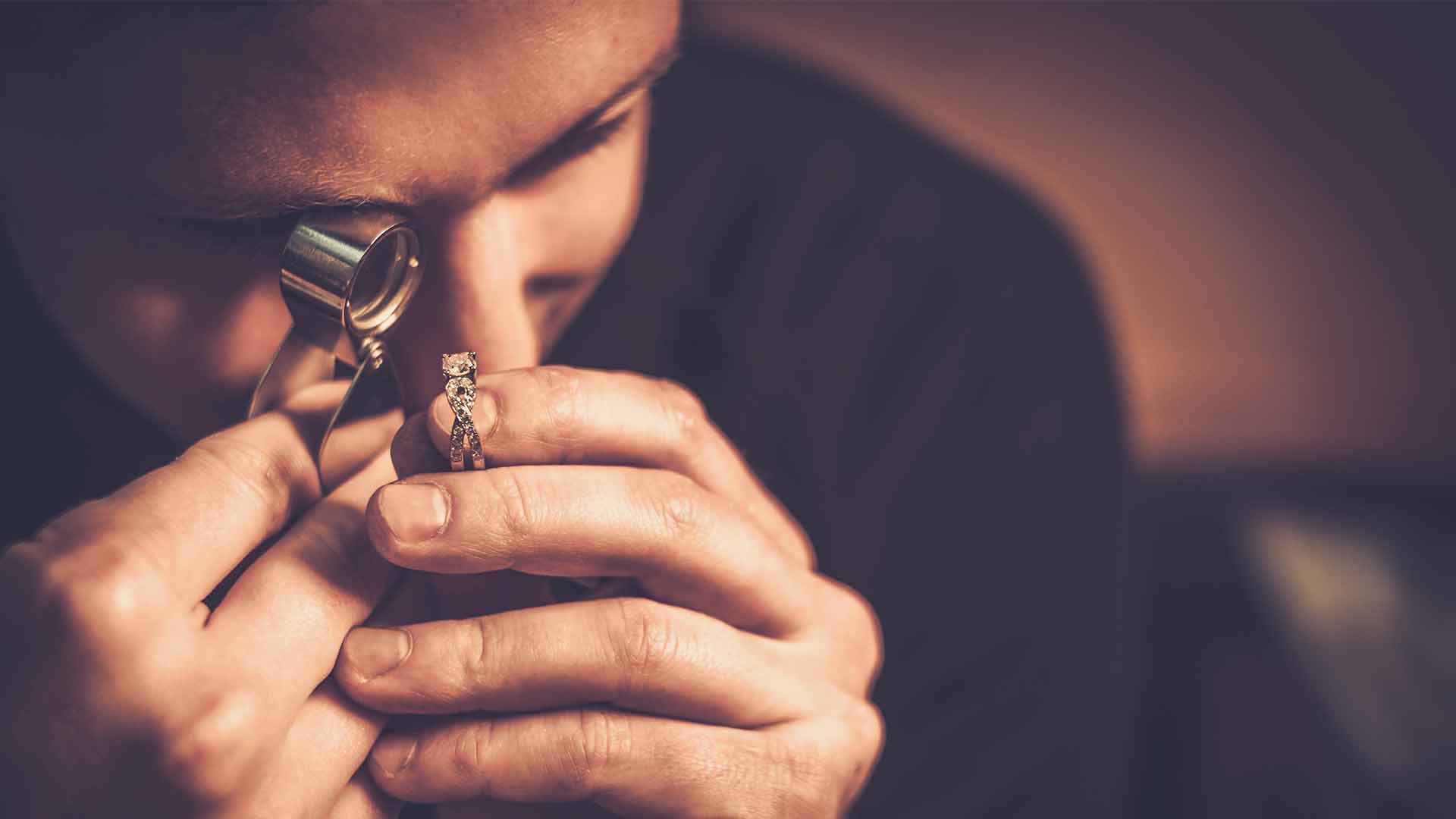What is a diamond dealer? Definition and description

The diamond expert unveils the sparkling beauty
Nothing concentrates as much preciousness and magnificence as a diamond. The mission of the diamond dealer is to reveal and magnify the sparkling beauty of this extraordinary gem. At the same time, stone cutter, trader, expert appraiser, it is a profession that has many facets, that is rich in experience and that allows to evolve in a world apart, confidential and hushed. Ancestral traditions must be respected, so that the powerful and eternal beauty of diamonds can be this secular witness and survive through the ages.

What is a diamond dealer?
Trained as a gemmologist or diamond lapidary, he is the guardian of all the traditional techniques that have been used for centuries in the art of shaping diamonds. He cuts, cleaves, carves and polishes the stone in order to reveal to the world all the magic of the diamond in its most perfect and accomplished form. Diamond cutting is an art that has been practiced since the 15th century. And the same gestures are still reproduced today.
What are the craftsman's gestures?
Planning
Before using his tools, the diamond cutter must define the cut by carefully examining the shapes and contours of the diamond while it is still rough. Because it is the natural shape of the stone that is decisive for its future use. The stone is marked with a felt-tip pen before it is cleaved or sawn.
Cleaving or sawing
Cleaving consists in separating the stone into two or more pieces suitable for cutting, using an iron or steel blade. The craftsman must show extreme precision in his gesture in order not to cut but to separate without breaking. Diamond being the strongest stone in the world, the craftsman must cut at the weakest point of the stone. With the patience of an alchemist, the customer must succeed in separating the material. This is the first approach to obtaining the best of the rough diamond, in its future most exploitable form (tetrahedron). Sawing is often preferable to cleaving, especially when the stone offers no weak points.
Cutting or pruning
This crucial phase allows the final shaping of the diamond. The stone is scrupulously examined by the cutter to determine where it can be rounded and shaped in accordance with its proportions. The craftsman uses another diamond to cut the stone and various high precision machines.
Faceting or polishing
This is the final step in making a diamond a fair and perfect cut stone. However, various actions such as setting, polishing and shining are essential to finally reveal the diamond's degrees of brilliance and firepower.
A diamond expert to evaluate its quality
If the gestures of the diamond cutter must be precise, meticulous and perfectly organized, his visual acuity is also put to contribution. He is the one who has the expertise and knowledge to evaluate and price the diamond in order to sell it to jewelers at the best price. Its quality is examined according to precise criteria: the 4 C's (carat, cut, clarity and color). This selectivity crowns this expert in his art of precision.
But to be of better advice and to establish his reputation, the diamond dealer must also be able to evaluate the emotion and life present in this exceptional stone. The refractive index of the light, the brilliance, the history of its cut are the vibrations of the soul of the skillfully cut diamond. Ready to be set in pure gold, only the craftsman is the custodian of its birth and only he will be able to offer it its most beautiful cradle. For eternity.
De Hantsetters, diamonteers since 1888
Customer service at your service, provided by diamond dealers
All our diamonds are independently certified by 3 world-renowed organisations



Want to talk to a diamonteer ?
Contact us now